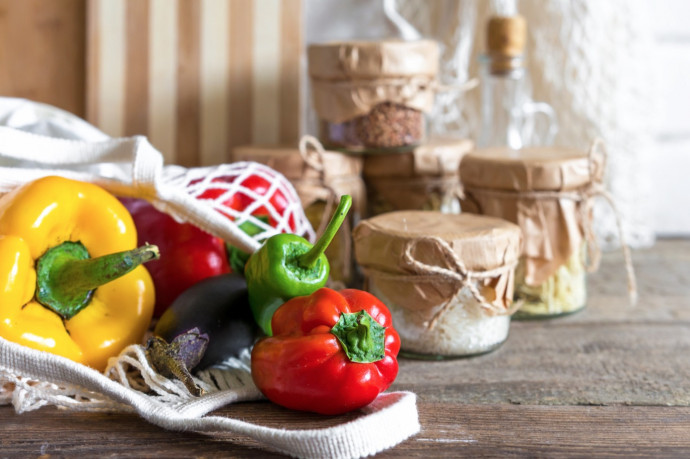The kitchen is often the most used room in your home - and the least loved. Half-filled spice jars can clutter your countertop. Piles of mismatched containers and lids spill out of your cabinets. And coffee filters and paper plates can pile up in your pantry alongside bulky cereal boxes and bread bags. Sometimes the kitchen can be a total mess. But do not worry about it!
Here are 7 clever kitchen organization ideas that will keep your kitchen clutter-free, so you can focus on what's important (no, really): enjoying your food.
1. Keeping wine good to the last drop

A good bottle of wine is a terrible thing to waste, but sometimes leftovers are unavoidable. Use these tips to keep your vino fresh and drinkable for days after opening the bottle.
A. Recorking a wine bottle to preserve leftovers can be a challenge if the cork no longer fits into the neck of the bottle. Use a rasp grater to shave off a portion of the cork so that it can be easily reinserted into the bottle.
B. Allowing red wine to “breathe,” or briefly exposing it to air, can enhance its flavor. But prolonged exposure causes it to over-oxidize and take on an unpleasant, vinegar-like taste. Gadgets like vacuum pumps minimize air exposure to preserve the flavor of leftovers, but you can get the job done with this homemade solution: completely fill an airtight container, like a small, lidded mason jar or an empty water bottle, with the leftover wine (the wine must reach the very top of the container to eliminate all air). Screw on the top and refrigerate for up to one week.
C. If you’re following the tip above and storing leftover wine in an airtight container, but you have only a small amount of wine left over, you can add clean marbles to the jar until the wine reaches the brim. No air; problem solved.
2. Chopsticks to the rescue

Most cooks like to keep a pump soap dispenser near the kitchen sink for hand washing. This is much more convenient than a slippery bar of soap on the kitchen counter, but there’s one problem: it’s wasteful to discard the last drops of soap that always collect in the bottom of the bottle. We found a fast, neat way to get the soap from the old bottle to a new one: insert a long chopstick into the neck of the new bottle and invert the old bottle on top. The soap will cling to the chopstick and trickle down more readily.
3. Keeping dry goods dry

Here’s a way to beat the humidity that can turn opened dry goods in your pantry stale: fill empty paper tea bags (or small pouches of cheesecloth) with rice and place them inside the storage containers before reclosing. The rice absorbs any extra moisture and can easily be replaced as necessary.
4. Smart flour storage

Bakers who live in humid climates probably know firsthand that flour absorbs moisture from the air, which in turns adds weight when you weigh it out for a recipe. Here are two ways to limit the rate of moisture absorption.
A. Store your flour in the freezer. This method also eliminates the possibility of bug infestations in the flour.
B. Those who may not have enough freezer space can try this tip: store flour in a microwave oven. When you need to use the microwave, just remove the flour, replacing it when you’re finished.
5. Cake flour arrangements

Bakers who make cakes infrequently may not have a covered storage container especially for cake flour. However, rather than simply storing cake flour as it came in the box, try transferring it to a zipper-lock bag and storing the bag in the original box. Then you just lift the bag out of the box, open it up wide, and dip the measuring cup right in. No more spills from pouring flour out of the box.
6. Terra-cotta for saving brown sugar

Here’s a novel use for the pieces of broken terra-cotta pots that accumulate around the garden potting bench: store one with your brown sugar to keep it from drying out and clumping.
1. Find a shard of terra-cotta about the size of a small saucer, with no sharp edges. Scrub it free of dirt and soak it in water for 15 minutes.
2. Blot the piece with a towel before placing it at the bottom of your brown sugar container. It will slowly release moisture, keeping the sugar soft.
7. Brown sugar in the bag

Pouring brown sugar out of its narrow box into a measuring cup can be a messy, frustrating chore. Streamline the task by transferring the brown sugar to a large, heavy-duty zipper-lock bag for storage. Not only does the sugar remain moister during storage, but a cup measure fits inside the bag easily and can be loaded up by pressing the sugar into it through the plastic. No pouring, spilling, or sticky hands.








